The exotic and invasive flora of Portugal - Universidade de Coimbra
The exotic and invasive flora of Portugal - Universidade de Coimbra
The exotic and invasive flora of Portugal - Universidade de Coimbra
You also want an ePaper? Increase the reach of your titles
YUMPU automatically turns print PDFs into web optimized ePapers that Google loves.
J. Domingues <strong>de</strong> Almeida & H. Freitas <strong>The</strong> <strong>exotic</strong> <strong>and</strong> <strong>invasive</strong> <strong>flora</strong> <strong>of</strong> <strong>Portugal</strong><br />
Table 3<br />
Life-forms (Raunkiaer 1934) <strong>of</strong> the naturalised <strong>exotic</strong> plant species<br />
Life-forms Nº <strong>of</strong> species % total<br />
Phanerophytes<br />
Chamaephytes<br />
Cryptophytes<br />
Geophytes<br />
Hydrophytes<br />
Helophytes<br />
Hemicryptophytes<br />
(Including 14 proto-hemicryptophytes)<br />
<strong>The</strong>rophytes<br />
(Including 3 parasites)<br />
Dubious cases<br />
139<br />
34<br />
65<br />
50<br />
7<br />
3<br />
65<br />
174<br />
23<br />
27.8<br />
6.8<br />
13.0<br />
13.0<br />
34.8<br />
4.6<br />
Table 4<br />
Exotic naturalised plant species, according to the classification <strong>of</strong> Kornas (1990)<br />
Types Nº <strong>of</strong> species % total<br />
Archeophytes<br />
(Plants which arrived before 1500)<br />
HoloagriophyteS*<br />
(Plants permanently established in natural habitats)<br />
Hemiagriophytes<br />
(Plants permanently established in semi natural habitats)<br />
Epoecophytes<br />
(Plants permanently established in ru<strong>de</strong>ral <strong>and</strong> cultivated<br />
habitats)<br />
Ephemerophytes<br />
(Plants temporarily introduced)<br />
Ergasiophygophytes<br />
(Plants temporarily established, escaped from<br />
cultivation)<br />
11<br />
27<br />
49<br />
220<br />
23<br />
158<br />
2.2<br />
5.4<br />
9.8<br />
44.0<br />
4.6<br />
31.6<br />
Dubious cases<br />
We inclu<strong>de</strong> in this group some species <strong>of</strong> doubtful<br />
spontaneousity <strong>and</strong> several species <strong>of</strong> uncertain position,<br />
acc. to this classification <strong>of</strong> synanthropic plants.<br />
12<br />
2.4<br />
* In the holoagriophytes we are including 2 species which are not synanthropic: Hydrocotyle bonariensis<br />
Commerson ex Lam. <strong>and</strong> Lilaeopsis attenuata (Hooker & Amott) Femald (Apiaceae), which<br />
have probably been introduced in portugal by migratory birds from America (Fem<strong>and</strong>es 1960).<br />
Botanica Comp1utensis<br />
2001,25,317-327<br />
322



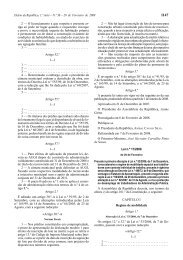
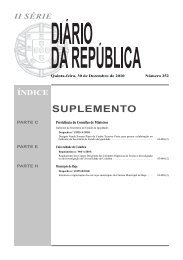
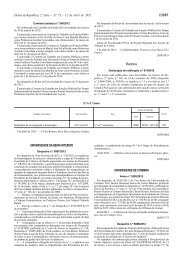
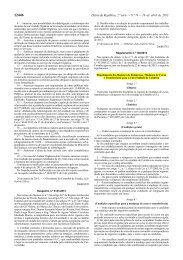
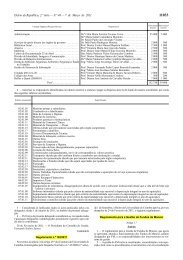
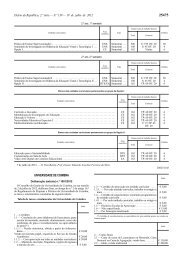
![RL #35 [quadrimestral. Julho 2012] - Universidade de Coimbra](https://img.yumpu.com/27430063/1/190x234/rl-35-quadrimestral-julho-2012-universidade-de-coimbra.jpg?quality=85)
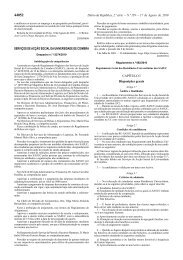
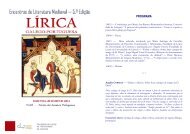
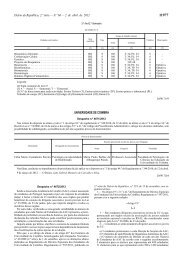
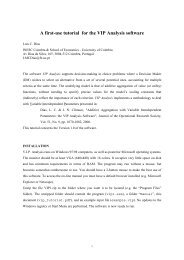
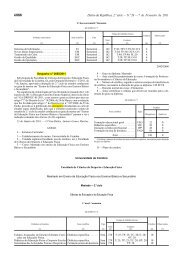

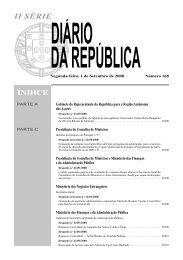
![RL #34 [quadrimestral. Março 2012] - Universidade de Coimbra](https://img.yumpu.com/27430022/1/190x234/rl-34-quadrimestral-marao-2012-universidade-de-coimbra.jpg?quality=85)